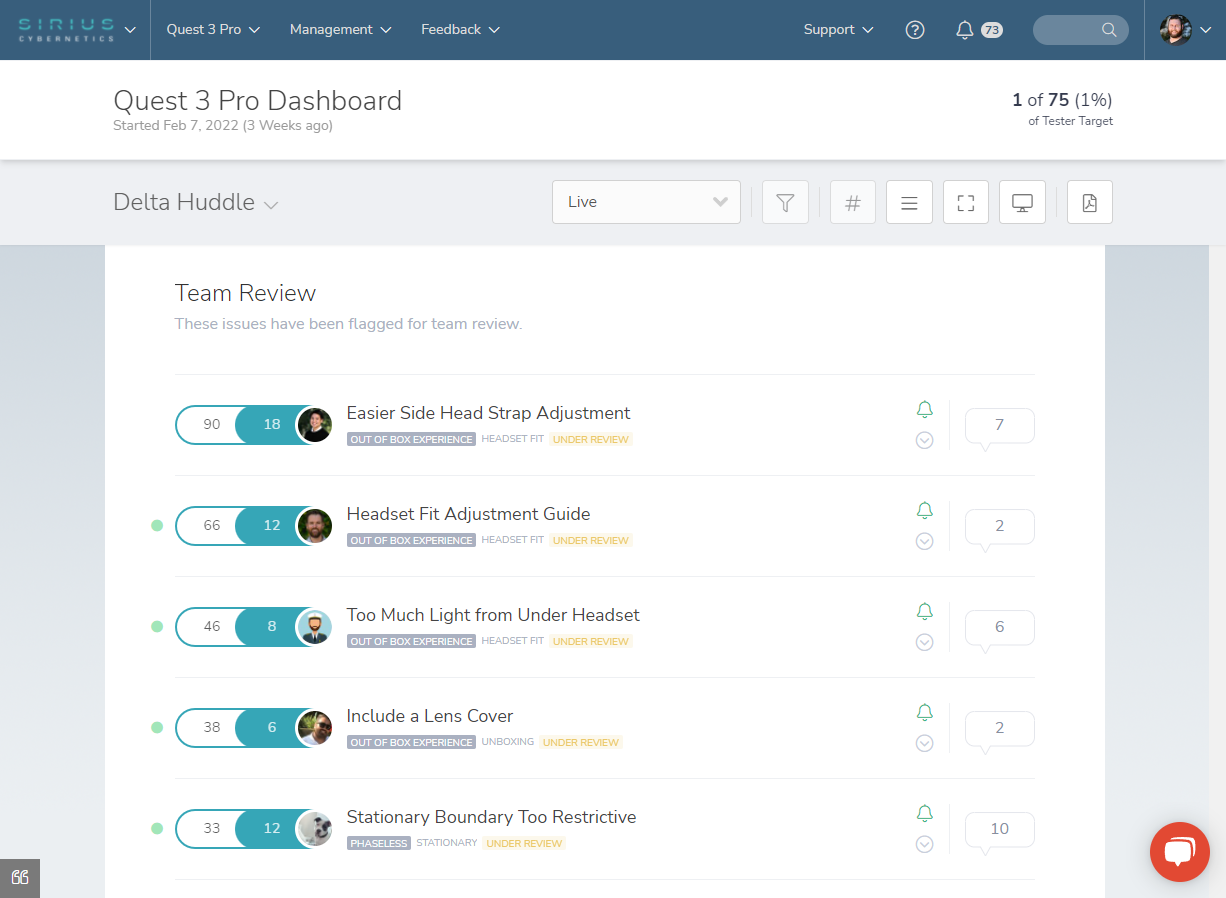
We live in a world where the tools and services we use every day are in a constant state of improvement. Not only do our favorite devices improve massively with each new release, so does the software that powers them. Driving this rapid development forward is the Agile framework. Since its creation in 2001, Agile’s focus on speed and adaptability has led a revolution in the modern workplace. But Agile isn’t just for project management and product development; By implementing Agile framework principles directly into our user tests, we can achieve impactful, meaningful feedback continuously throughout the entire lifecycle of a product.
Let’s check out five key Agile principles that can make an immediate impact on the quality of a user test, and learn how Centercode makes integrating those principles easier than ever.
Use Agile Sprints to Test Key Features
A hallmark of Agile development is the Sprint - a short, clearly defined period where your team accomplishes a set amount of work. Sprint planning breaks the massive task of product development down into manageable chunks that can be completed over a series of Sprints, as opposed to struggling to complete a massive, poorly defined task. By aligning your user tests with the team's Sprints, the development team can receive feedback quickly on recently completed features (e.g., gathering end-user feedback on the previous Sprint's features while working on the current Sprint), and testers won't be overwhelmed or overloaded.

Centercode’s Delta platform makes this process easy through time-boxed phases and planned testing Sprints that can onboard users, test features, and close a test.

Communicate Transparently with Testers
Timely and transparent communication among the Sprint team is crucial in order to maintain the rapid pace of Agile development. Similar to keeping a development team aware of expectations, due dates, and work items, keeping testers informed as if they are part of your Sprint team ensures that your testers know what to expect especially given the sometimes unpredictable nature of development (e.g., what the next set of features to test will be, when to expect them, when their activities are due, and how much time they'll need to set aside to complete them on time).
User testing managers using Centercode can leverage tools such as content, notices, and activities to communicate expectations to testers, and feedback tools like tickets and comments to dialogue with testers. The more you communicate, the more testers feel motivated and appreciated during a test, resulting in more feedback for you and the team.
Host a Weekly Beta Test Feedback Meeting
Agile moves too fast for user feedback to be delivered as a report at the end of a 6+ week testing period detailing all of the Issues and Ideas that should be implemented and Praise that should be celebrated. Instead, schedule weekly meetings for reviewing important feedback items with your team. Building this team awareness is fundamental towards transforming feedback into actual improvements instead of sending a progress report into the ether, hoping it’s reviewed, and that something is implemented somewhere down the line.
Centercode supports multiple tools for making feedback review meetings easy and informative. For example, you can leverage our Delta Huddle dashboard to present mission critical feedback, and team up with Ted, our virtual Scrum Master, to regularly deliver detailed reports to your team.

Test Continuously
In today’s product landscape, nothing can really be considered complete at launch. This is especially true in Agile software development, where post-release updates are already planned before the product heads out the door. Those post-release updates need to be tested just as much as the product itself did prior to release. Continuous development and iteration is a key characteristic of Agile, and it should be for your testing program as well. Test early, test often, and test throughout the entire lifecycle of the product to ensure you deliver a product that’s closely aligned with your market’s needs.
Centercode supports planning your tests months in advance by importing test plans, along with the ability to add new phases during a test to adapt to changes in your product development.

Assign Statuses to User Testing Feedback
A cornerstone of Agile is tracking the progress of your work items throughout the entire development cycle, from backlog to in progress and finally published. Feedback should be treated the same, with statuses tracking the development of feedback from its creation all the way until it’s been implemented into the product. With continuous testing in Agile, feedback status is necessary to help the team understand which feedback is ready to be implemented versus feedback that still needs additional context or information.
We’ve integrated this philosophy into Centercode with our feedback statuses. These statuses go beyond just tracking the progress of your feedback; they also alert testers to the need for more information, and signal to the platform that progress has been made towards improving the product.
So, there’s five easy ways to incorporate Agile methods directly into your user tests. Beyond simply integrating Agile principles into product development, Centercode has tools for efficiently onboarding users, distributing software keys to program members, and visualizing feedback data. You can learn more about how Centercode is ushering in the next generation of product testing here.


















